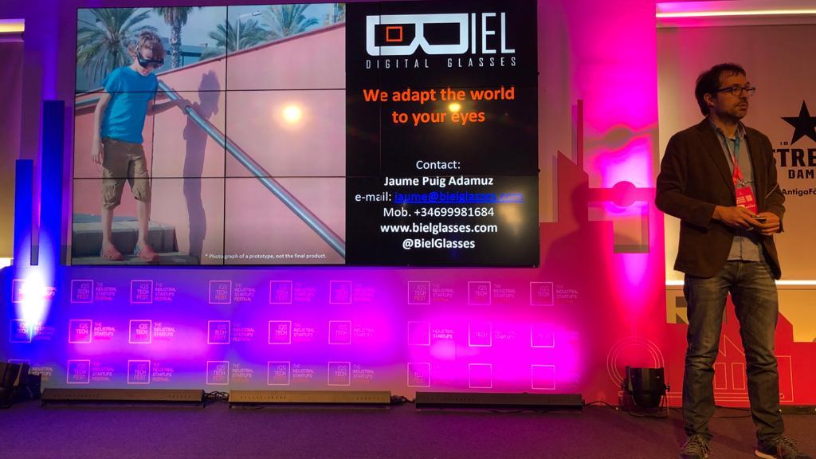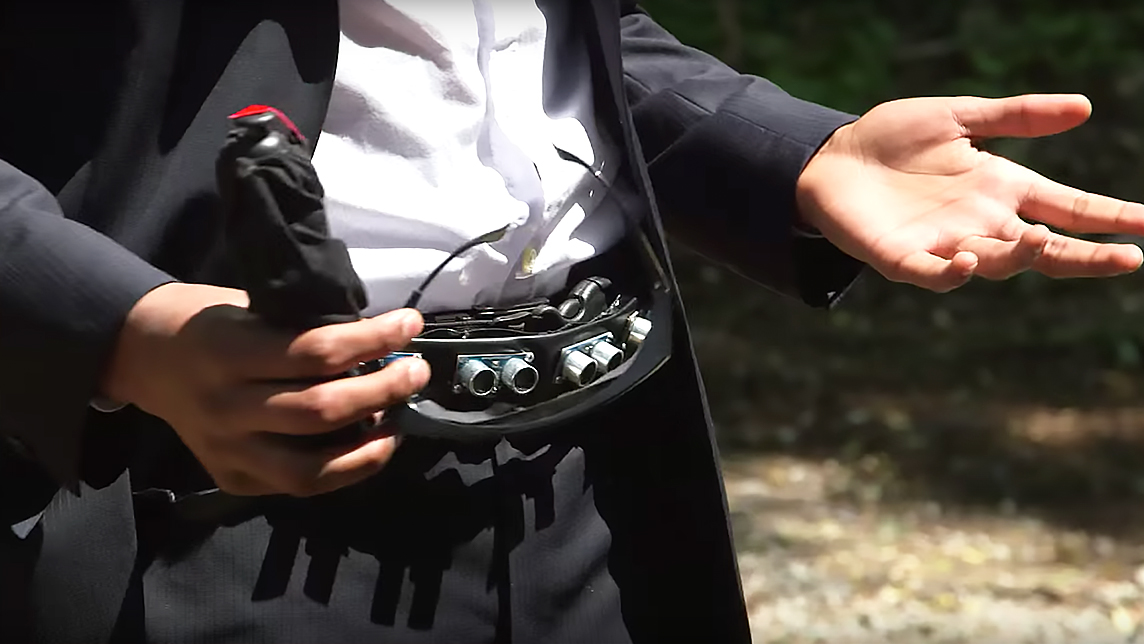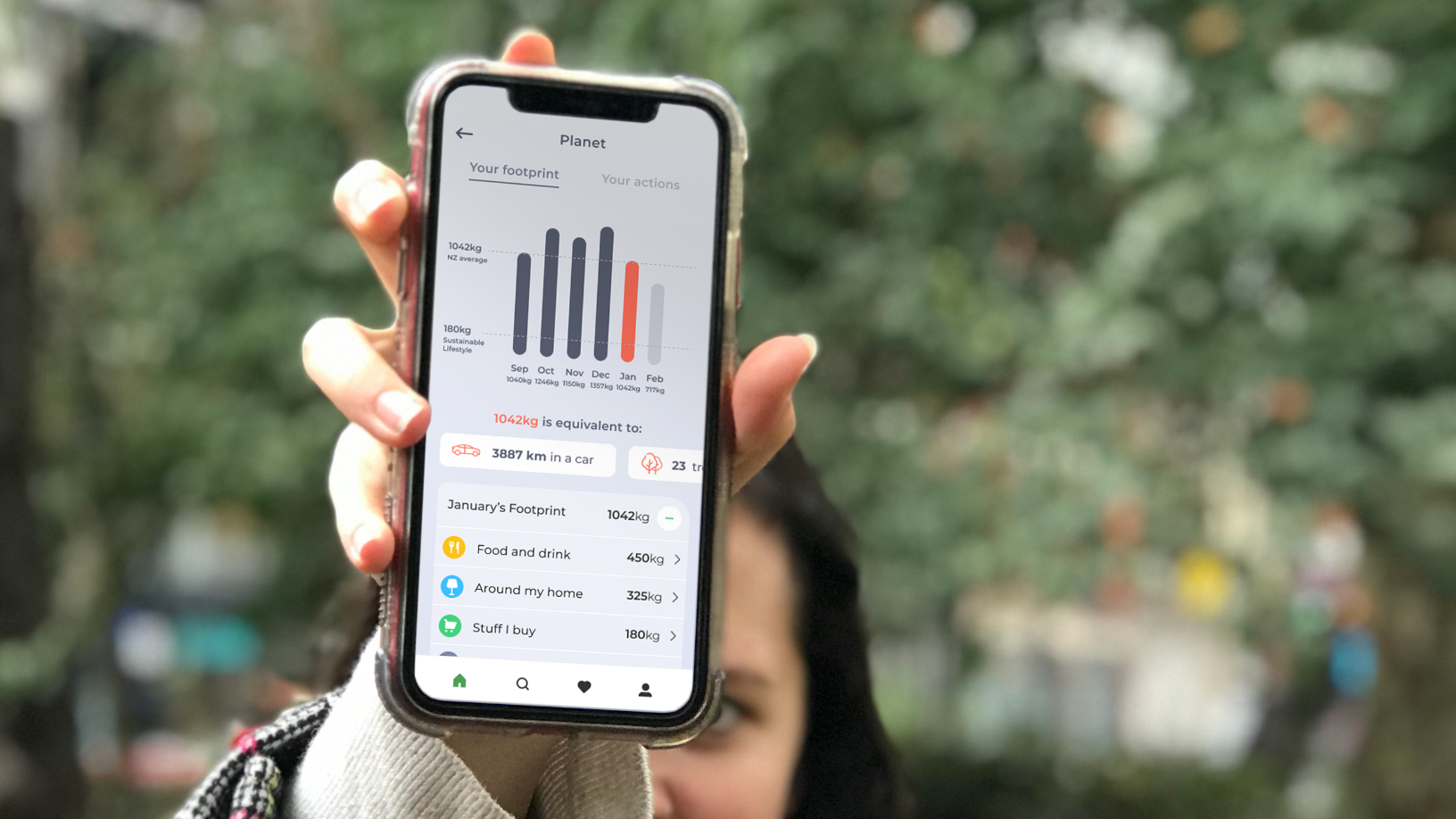More people suffer from low vision than from blindness, yet the medical condition remains little known and has no available treatment to date. Now, parents of a little boy suffering from low vision have invented a solution for such patients, which they expect to take to market in the spring of 2021.
Electronic engineer Jaume Puig Adamuz and doctor Constanza Lucero embarked on a two-year quest to find a solution for their two-year-old son, Biel, given the lack of medical procedure to treat low vision and other relevant resources. Together with Eulàlia Sánchez, an optometry specialist at the Polytechnic University of Catalonia, a center of tech innovation in Barcelona, the couple founded Biel Glasses in 2017.
The World Health Organization defines a low vision sufferer as “one who has impairment of visual functioning even after treatment and/or standard refractive correction,” and estimates less than 5% of low vision patients have access to the care that they need.
CompassList recently interviewed Puig about the use of AI, AR/VR/MR and robotics to create the technology behind Biel Glasses, its development and the company's journey to date.
This interview has been edited for length and clarity.
Many people do not know about low vision. What does it mean for those affected, and why has it not been treatable till now?
When our son, Biel, was diagnosed with low vision, we didn't know what it was and had never heard of it. People know a lot more about blindness, which affects far fewer people in the world than low vision: complete blindness affects seven times fewer people than low vision.
Low vision sufferers have problems with daily tasks in life. It is difficult to define general thresholds for everybody because low vision varies so much from person to person. There are those who have a reduced field of vision, like tunnel vision, while others have a complete field of vision but see blurred images. Yet others have a combination of both or have blind spots, so there is no exact definition.
Normal refractive glasses and laser surgery cannot treat low vision because it is related to problems with the retina, optic nerve or even the brain. There is surgery for the retina, but for degenerative low vision diseases, like glaucoma or retinitis, surgery is generally not effective and needs to be carried out during the initial developmental stages of low vision.
How did you discover your son has low vision?
My son was about two when he was diagnosed. We only realized the problem because of his mobility difficulties. He took a long time to start walking and when he did, he had problems with climbing the stairs, for example, and he would fall very often. Initially, we didn't know the problem was with his eyes but after visiting many doctors, Biel was diagnosed with an optic nerve problem.
We were angry because the doctors said there was no solution, but at least that his condition was not degenerative. I thought then that if doctors and medicine could not fix the problem, then perhaps we could adapt reality such that Biel can utilize his remaining visual capacity. Theoretically, we knew that was possible because I had previously worked with virtual reality and gone to a 3D vision congress in France, where I discussed the idea with a specialist in the field. He told me that what I wanted to do was possible.
How did you start to develop your technology and what does it consist of?
From 2015 to 2017, we were researching the available technology to develop a solution. The problem then was the state of technology in 2015: computers were not fast or light enough to be portable so as to be able to analyze in real time the physical landscape, and detect all that could be a danger to somebody. The evolution of AI processors meant that they have become powerful, fast and light enough for embedded systems, and from 2017 on, we started to have suitable platforms – AR, VR and mixed reality – for developing the solution, and this is what we are doing.
In 2017, we set up the company and designed some proofs of concept to prove the feasibility of our solution. We chose a platform that uses processors from NVIDIA, which is the biggest company in the graphical processing and AI processing fields, and it's working very well.
There were consumer smart glasses on the market and so we explored the possibility of using Google Glass or similar products, but we realized that they did not meet our requirements. For example, Google Glass is monocular (with only one screen for both eyes), and we wanted to use mixed reality (which works better with binocular devices that allow a 3D immersive experience). While the development team can work on the background and enhance the image via zooming in with AR, it does not let us improve the whole image by accentuating aspects that people with low vision cannot see, like texture. We also realized it was essential for patients to be able to improve contrasts.
After some tests, we realized we needed to build our own glasses. We're trying not to build everything from scratch but to use a modular approach, with NVIDIA processors and providers for the glasses, display and cameras, and then to integrate the components to create our own device.
Which stage are you at in developing your glasses? What will the product look like?
We are still in the prototyping stage, but we know what the final product will be like. We are trying to make it as easy as possible to operate because people with vision problems cannot make use of a complex user interface, so most of the functionality will be automatic.
There will be no need for user intervention to work the glasses but there could be some on-demand functions, for example, changing the light or contrast. If there are on-demand functions, then there will be only one or two buttons to make it as easy as possible to use for low vision sufferers.
The problem with making the product commercially viable is that it will need to be customized for each patient. The glasses will be sold in optical stores that specialize in low vision and there will be trained personnel there who will need to know how to configure the glasses to the specific requirements of each patient. After being configured, the goal is that the patient will not need to control the settings of the glasses most of the time.
If the user needs to zoom in or out, we can have a button for this or there can be a zoom window. We will chose the option that requires the least effort for the patient. The first version will not have voice activation but this can be added later. We will design a solution that will not need user intervention.
We are working to make the glasses as light as possible. They will not be like normal glasses exactly because they are not transparent as there will be a display screen inside the glasses. They are a cross between a VR headset and glasses, but lighter because VR glasses are usually designed for coaching purposes while ours are needed for walking around. For example, the processor will not be embedded in the glasses, but in a separate, connected device thus allowing us to make the glasses smaller and lighter.
What will Biel Glasses users be able to do? How are you testing the technology?
Our principal objective is to help people get around on their own, which is very important as dependency is a consequence of low vision. My son is only eight and he goes everywhere with us, so it (the sense of being dependent) has not really kicked in yet.
We are testing the technology now with patients and the first version will not be for children; to improve the system, we need the feedback of adults because they are more able to accurately express their needs.
We are working with the faculty of Automatic Control and Robotics at the Polytechnic University of Catalonia (UPC), where we built a mobility lab with obstacles and holes and steps, just like in the street. We also partnered with another university, King Juan Carlos University in Madrid, because they are experts in the NVIDIA platform we chose, and they have developed some mobility projects using AI to recognize features in the street. Now, we have started working with Leitat, another technology center in Barcelona, because they are experts in robotics and we use robotics technology. Autonomous robots need to use computer vision to learn how to move around and navigate, and AI helps them to recognize objects whilst doing so.
We have been working for three years on the technology. I am the CEO. My wife, Constanza Lucero, provides the health know-how, especially for the testing methodology, and is in charge of relations with medical staff. Our chief scientific officer is Eulàlia Sanchez, a professor of optometry at UPC and one of Spain's best low vision specialists with over 30 years' experience as a visual therapist and researcher in the subject. Our team is completed by Jordi Puig Adamuz, a computer engineer with more than 20 years in e-health projects.
Is Biel Glasses the first real, life-changing technology for low vision worldwide?
There is nothing like this on the market. Other solutions use AR for helping low vision, but there is no solution that uses AR with special mobility functions – like ours – that understands the reality and then helps people know if there is any risk. Other solutions are focused on making the image easier to understand, but their technology does not understand the image like ours does.
Have you received any external funding and will you be looking for this in the near future?
We have received more than €400,000 in public support from European and national institutions. The founders have invested €65,000. We've participated in various acceleration programs including the European Health Catapult financed by EIT Health, for innovative health techs, and also IQS Next Tech, for industrial startups. We were also winners of the Imagine IF! program of the Innovation Forum, held in Barcelona.
We will close a seed round in July of around €400,000 to finance the product's industrialization and, in about a year, we will launch another round for €1m to finance initial commercialization.
Besides the financial awards mentioned (the EU's Horizon 2020 program, NEOTEC from the Spanish government's Center for Technological Development CDTI, Startup Capital from the government of Catalonia), we also won the "Tech for Good Award" at the GITEX Technology Week in Dubai.
When and how do you aim to commercialize? What permits do you need to do so and what will the price tag be?
The product will be sold by opticians specializing in low vision who can customize the glasses to each patient's needs. The price will be €4,900 and in many European countries, it will be subsidized either completely or partially by public services, so the patient will pay far less or nothing at all. The price includes a first year of servicing, which costs about €500 annually.
After three years, customers can trade in their existing model of Biel Glasses for a new version at a 50% discount. The product will be sold as a Class 1 Medical Device in the EU, and we expect to start selling from Spring 2021. The patent is on its way and we hope to register it in March 2020.











